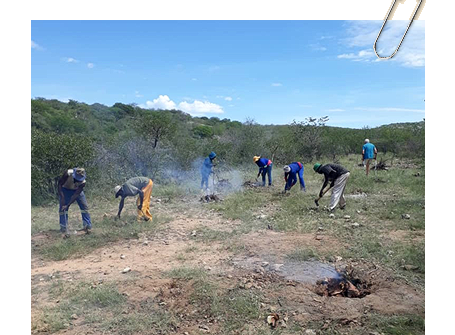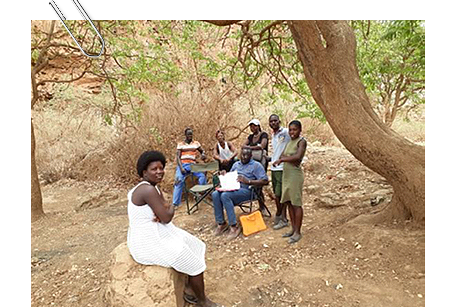Cash-for-Work Project for Drought Relief in Kunene Region
IRDNC strives to improve the lives of rural people by diversifying the socio-economy in Namibia’s communal areas to include wildlife and other valuable natural resources. The Kunene Region where IRDNC pioneered Community-Based Natural Resource Management (CBNRM), is the third poorest region in the country, with a poverty rate of almost 40%. The Kunene, comprising of 115,260 km² and 88,300 inhabitants, had an unemployment rate of 36% of the labour force according to the 2011 national census.
Despite the region’s spectacular mountainous landscapes and free-ranging wildlife, including the world’s largest population of free-roaming black rhinos and desert-adapted lions and elephants; its remoteness, difficult terrain, long distances, aridity, and limited capacity of some conservancies intensified the impacts of the recent drought lasting close to five years, which has exacerbated an already marginalised community.
In 2019, the Namibian Chamber of Environment (NCE) initiated a drought relief project at the request of the private sector in response to the government’s recent call for financial assistance towards drought relief. With the Kunene Region being one of the most drought-affected regions, IRDNC with funding from NCE, launched a Cash-for-Work Project designed to grant cash income into communities by creating short-term employment opportunities related to tourism and conservation projects.
With a budget of N$ 2,7 mio (with N$ 1 mio donated by the B2Gold Mine Namibia), the project supported short-term employment during the drought period, targeting mainly unemployed youth and elder women, although able elder men were not excluded. The project ended in June 2020, having employed a total of 186 local residents who earned direct cash for their work.
The Kunene’s sparse human settlement due to the mountainous landscapes and harsh environmental conditions makes room for wildlife and has tourism potential. The Cash-for-Work projects therefore prioritised tourism development work, i.e. establishing rudimentary 4x4 access tracks, hiking trails, hiking camp and picnic sites, hides and viewpoints. Community members serviced and cleared 175 km of game count routes and 21.5 km of tourism access tracks.
Further tourism development work is being planned through the Kunene Highlands Tourism Project, which aims to establish tourism as an alternative and sustainable income earning source for highland conservancies whose significant tourism potential is currently latent.

- New track to link Okozongwehe and Okatjavazandu game count routes in Orupupa Conservancy

- Cleared picnic and camp site



